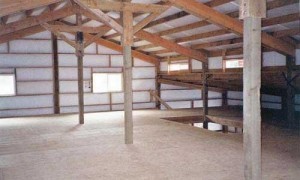Clones or Cuttings.
Extremely high humidity for the first 3-7 days after cannabis clones have been taken is most effective for negating drought stress. It appears the most success comes with 80-95% relative humidity in a cloning dome.
After clones develop roots so they can intake and transport water properly, you can lower the humidity and take them out of their dome.
Most marijuana strains like vegetative growth to be in the 55-65% relative humidity range. Because there are no flower sets established, the worry about mold is not as prevalent.
Some marijuana strains may dry out or have leaf problems if they’re growing in too arid an environment, and you may even have to get a humidifier to boost humidity.
If you’re worried about molds or mildews for any reason, including the fact you might be growing marijuana which is prone to molds and mildews, keep your humidity lower than 60% in grow and bloom phase.
During bloom phase, and especially if you’re seeing dense, fat buds, you want humidity lower than 58% but not lower than 51%.
Gray mold loves to grow inside dense marijuana buds.
If you see mold or mildew in your marijuana grow barn, or are worried about an outbreak, take a look at the humidity conditions which favor mold or mildew, and then alter your humidity levels to directly go against those favorable conditions.
Also be sure to invest in sufficient aeration fans so you blow fresh air into the cannabis canopy. Stagnant, humid air is bad for buds.
So….What does all of this mean?
 In a nutshell, proper climate control is essential for maintaining a profitable crop.
In a nutshell, proper climate control is essential for maintaining a profitable crop.
I’d start by designing a building which can be relatively efficient in maintaining temperature. Design the walls with thick insulation cavities (post frame is great for this). By using products such as BIBs (https://www.hansenpolebuildings.com/2011/11/bibs/) for wall insulation, a 2×8 wall cavity will yield R values of over 30! A good vapor barrier must be applied to the inside of all wall framing, to keep the insulation values from being reduced by moisture from inside. Between wall framing and siding, building wrap (https://www.hansenpolebuildings.com/2016/01/determining-the-most-effective-building-weather-resistant-barrier-part-1/) is ideal for letting any moisture pass out of the wall insulation cavity.
As to building height, the lighting supplier can advise as to ideal distance from tops of plants to light source. Add the height of tables or benches, the mature plant, distance to lights and thickness of lights to arrive at the perfect ceiling height. Flat level ceilings make it easier to control temperatures throughout the building.
I’d probably look at using “greenboard” for lining the building interior.
Greenboard is a water-resistant gypsum board or drywall panel which came out in the 1960’s. The product is essentially a more durable gypsum board. It has the same gypsum core found on standard drywall, but it comes with a thicker coating of paper which is protected by wax for water resistance. The exterior paper has a green tint to it helping to separate it from standard gypsum board, and leading to the product being known by most people as “greenboard”. Greenboard drywall isn’t water-proof, it simply resists moisture better than the standard gypsum board.
Special care must be taken when putting greenboard drywall on ceilings. It’s heavier and a bit weaker than standard drywall which can lead to sagging issues. To compensate for these problems it’s important to fasten the drywall every 12 inches, which means placing ceiling joists on one foot centers.
Do not place a vapor barrier between ceiling materials and ceiling framing. This allows excess moisture to pass through the ceiling and escape from a properly ventilated attic space (https://www.hansenpolebuildings.com/2014/02/pole-building-ventilation/).
In order to get a consistent thickness of ceiling insulation, raised heel trusses should be used (https://www.hansenpolebuildings.com/2012/07/raised-heel-trusses/). The attic is not the place to scrimp on insulation thickness – when in doubt err on the high side.
With proper planning, a new marijuana grow barn can prove to be not only fun, but profitable.








